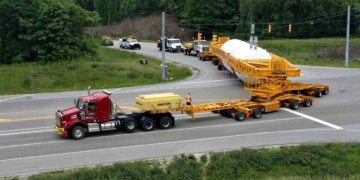In today’s competitive business environment, efficiency is everything. For companies that rely on transportation whether in logistics, delivery services, construction, or field operations the ability to manage vehicles effectively can mean the difference between profit and loss.
Real-time tracking, powered by GPS and telematics vehicle technology, has emerged as a powerful tool that goes beyond location monitoring.
It provides insights into fleet performance, employee productivity, customer service, and cost savings.
Here are five key ways real-time vehicle tracking improves business efficiency and strengthens overall operations.
1. Enhanced Fleet Visibility and Control
Knowing exactly where your vehicles are at any given moment is a game-changer. Real-time tracking allows managers to monitor routes, stops, and driving behavior in real time. This visibility ensures that vehicles are where they should be, reducing unauthorized use and improving accountability.
For businesses with large fleets, this means greater control and oversight without the need for constant check-ins. It also reduces delays caused by miscommunication or route confusion, helping drivers stay on task and businesses maintain productivity.
2. Optimized Routing and Reduced Fuel Costs
Fuel is one of the largest expenses in transportation-heavy industries. Inefficient routes, idling, and detours contribute to unnecessary costs. Real-time tracking systems use GPS data to identify the fastest and most fuel-efficient routes.
Managers can reroute vehicles instantly to avoid traffic jams, road closures, or weather disruptions. Over time, these optimizations lead to substantial fuel savings, reduced wear and tear on vehicles, and faster delivery times all of which directly improve efficiency and customer satisfaction.
3. Improved Driver Performance and Safety
Employee behavior behind the wheel has a direct impact on efficiency, safety, and costs. Real-time tracking provides insights into driving habits such as speeding, harsh braking, excessive idling, or unauthorized stops.
By monitoring these patterns, businesses can provide targeted coaching and training to improve driver performance. Safer driving not only reduces accident risks but also lowers insurance premiums and maintenance costs. A culture of accountability and safety contributes to smoother operations and long-term savings.
4. Streamlined Maintenance and Reduced Downtime
Unexpected vehicle breakdowns can cause costly delays and disrupt schedules. Modern tracking systems often integrate with telematics to monitor vehicle health, providing alerts for issues such as low battery, engine problems, or overdue maintenance.
By scheduling preventive maintenance based on actual usage and performance data, businesses reduce the likelihood of breakdowns. This proactive approach minimizes downtime, keeps vehicles running smoothly, and ensures that resources are always available when needed.
5. Better Customer Service and Reliability
In industries where customer satisfaction depends on timeliness such as logistics, delivery, and ride services real-time tracking provides a competitive edge. Businesses can share accurate ETAs (Estimated Time of Arrival), update customers about delays, and ensure faster response times.
Customers appreciate transparency and reliability, and businesses that consistently meet or exceed delivery expectations build stronger reputations. Real-time data also helps companies resolve disputes quickly by providing verifiable records of routes, stops, and delivery times.
Conclusion
Real-time vehicle tracking is no longer just a convenience it’s a necessity for businesses that rely on transportation. By improving fleet visibility, optimizing routes, enhancing driver safety, streamlining maintenance, and boosting customer service, tracking systems deliver measurable improvements in efficiency and profitability.
In a fast-paced world where every minute and every gallon of fuel counts, investing in real-time vehicle tracking is one of the smartest moves a business can make to stay competitive, cut costs, and keep customers satisfied.













